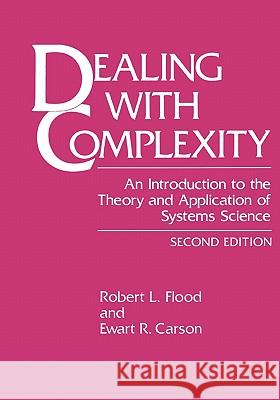Dealing with Complexity: An Introduction to the Theory and Application of Systems Science » książka
Dealing with Complexity: An Introduction to the Theory and Application of Systems Science
ISBN-13: 9781441932273 / Angielski / Miękka / 2010 / 280 str.
Dealing with Complexity: An Introduction to the Theory and Application of Systems Science
ISBN-13: 9781441932273 / Angielski / Miękka / 2010 / 280 str.
(netto: 383,36 VAT: 5%)
Najniższa cena z 30 dni: 385,52
ok. 22 dni roboczych
Dostawa w 2026 r.
Darmowa dostawa!
Contents 11. 2. 2. Four Main Areas of Dispute 247 11. 2. 3. Summary . . . 248 11. 3. Making Sense of the Issues . . 248 11. 3. 1. Introduction . . . . 248 11. 3. 2. The Scientific Approach 248 11. 3. 3. Science and Matters of Society . 249 11. 3. 4. Summary . 251 11. 4. Tying It All Together . . . . 251 11. 4. 1. Introduction . . . . 251 11. 4. 2. A Unifying Framework 251 11. 4. 3. Critical Systems Thinking 253 11. 4. 4. Summary 254 11. 5. Conclusion 254 Questions . . . 255 REFERENCES . . . . . . . . . . . . . . . . . . . 257 INDEX . . . . . . . . . . . . . . . . . . . . . . 267 Chapter One SYSTEMS Origin and Evolution, Terms and Concepts 1. 1. INTRODUCTION We start this book with Theme A (see Figure P. I in the Preface), which aims to develop an essential and fundamental understanding of systems science. So, what is systems science? When asked to explain what systems science is all about, many systems scientists are confronted with a rather daunting task. The discipline tends to be presented and understood in a fragmented way and very few people hold an overview understanding of the subject matter, while also having sufficient in-depth competence in many and broad-ranging subject areas where the ideas are used. Indeed, it was precisely this difficulty that identified the need for a comprehensive well-documented account such as is presented here in Dealing with Complexity.











